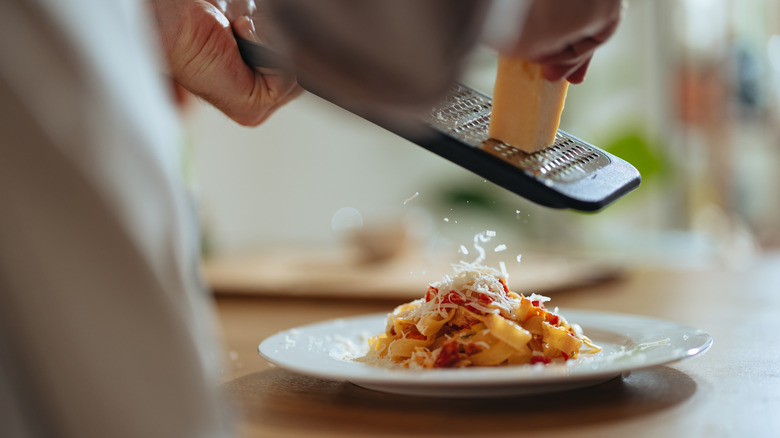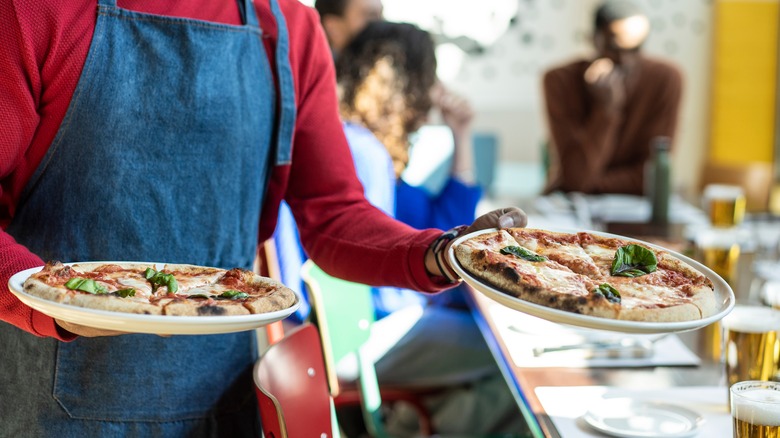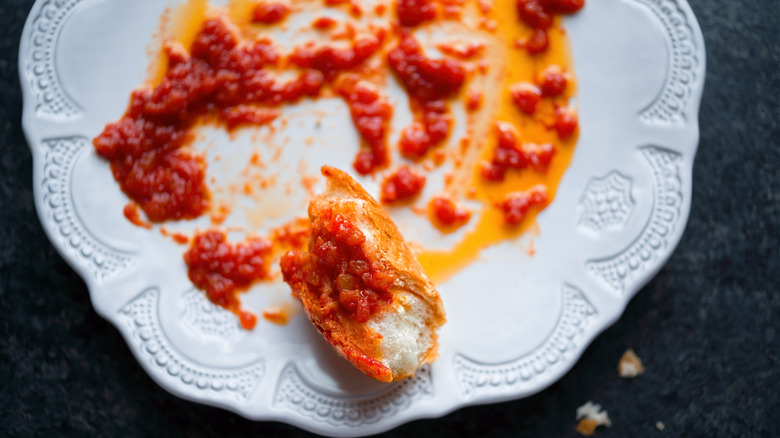Why It's Bad Etiquette To Ask For Extra Cheese When Dining In Italy
Italians know good pasta. They will be the first to tell you that fettuccine noodles are best served with creamy sauces, can perfectly describe what al dente feels like, and of course, they know how to serve a plate of pasta that is seasoned and flavored to perfection. So, if you are ever dining in Italy and your spaghetti arrives without an offering of grated Parmigiano cheese on top, it's safe to say that your server didn't forget this detail — it's just that the pasta doesn't need it.
In true Italian dining customs, if your plate of linguine was supposed to be topped with a shower of cheese, it would already be there when it's placed in front of you. If it's not, it's best not to ask for it. In the eyes of your server and/or chef, what you'll be doing is suggesting (before even taking a bite) that the pasta isn't perfect, and that your dish needs cheese to improve its flavor, which may be considered insulting.
Now, we're not about to judge anyone based on their preference for copious amounts of Parmigiano Reggiano or Pecorino Romano. What you do in your own home is nobody else's business. But, to Italians, pasta is something that has been perfected in their homeland over hundreds of years and they are more than confident in the presentation.
Cheese is kept off seafood dishes and pizza, too
In Italy, there's a standard that pasta dishes containing seafood don't come garnished with cheese. Fresh fish and shellfish have incredible, delicate flavors that will only be masked by a shower of dairy, so, in order to preserve its integrity, these dishes are served without it. Even certain non-seafood pastas sometimes don't come with cheese, and this is usually because the cook believes it will take away from other flavors of the dish. For example, pasta with freshly shaved truffles probably doesn't need anything at all to make it taste better.
And, while we are accustomed to adding grated Parmesan on top of our pizzas in America (restaurants often even leave shakers of it on the tables), this is not something people do in Italy. Like pasta, pizza comes as it's meant to be enjoyed, usually with minimal yet seasonal and very fresh ingredients. Consider this: Naples, the birthplace of pizza, isn't anywhere near the northern Italian provinces where Parmigiano Reggiano is from. Before the times of rapid, reliable food importation, regions relied on local ingredients. So, naturally, Parmigiano wouldn't have been a convenient food source in the southern region of the country.
More tips to dine like an Italian
When in Italy, asking for cheese on top of your pasta or pizza isn't the only thing that may make your server and locals around you raise their eyebrows in surprise. One of the most well-known faux pas in Italy is to order a cappuccino after the noon hour. The espresso drink is considered to be a morning beverage, and is considered way too heavy to drink after a large lunch or dinner.
Another custom to know — while you will likely find a basket of bread on your table when you sit down for lunch or dinner in Italy, what you won't find are cruets of olive oil and balsamic vinegar for dipping that bread into, so maybe don't ask for them either. We know, it's delicious, but it's quite an American practice. Bread in Italy is for accompanying your food or for scraping up any extra sauce that's left on your plate. On that same note, don't dare ask for butter for your bread.
Now that you know what not to ask for, there is something that you always need to request when you're dining out in Italy: the check. Part of dining culture in the European country is to enjoy your time out, so there is never a sense of being rushed through a meal. Unlike in the U.S., your server won't automatically bring your check when it appears you've wrapped up the meal. You'll need to ask for it when you're ready to go, whether that's after 30 minutes or three hours.



